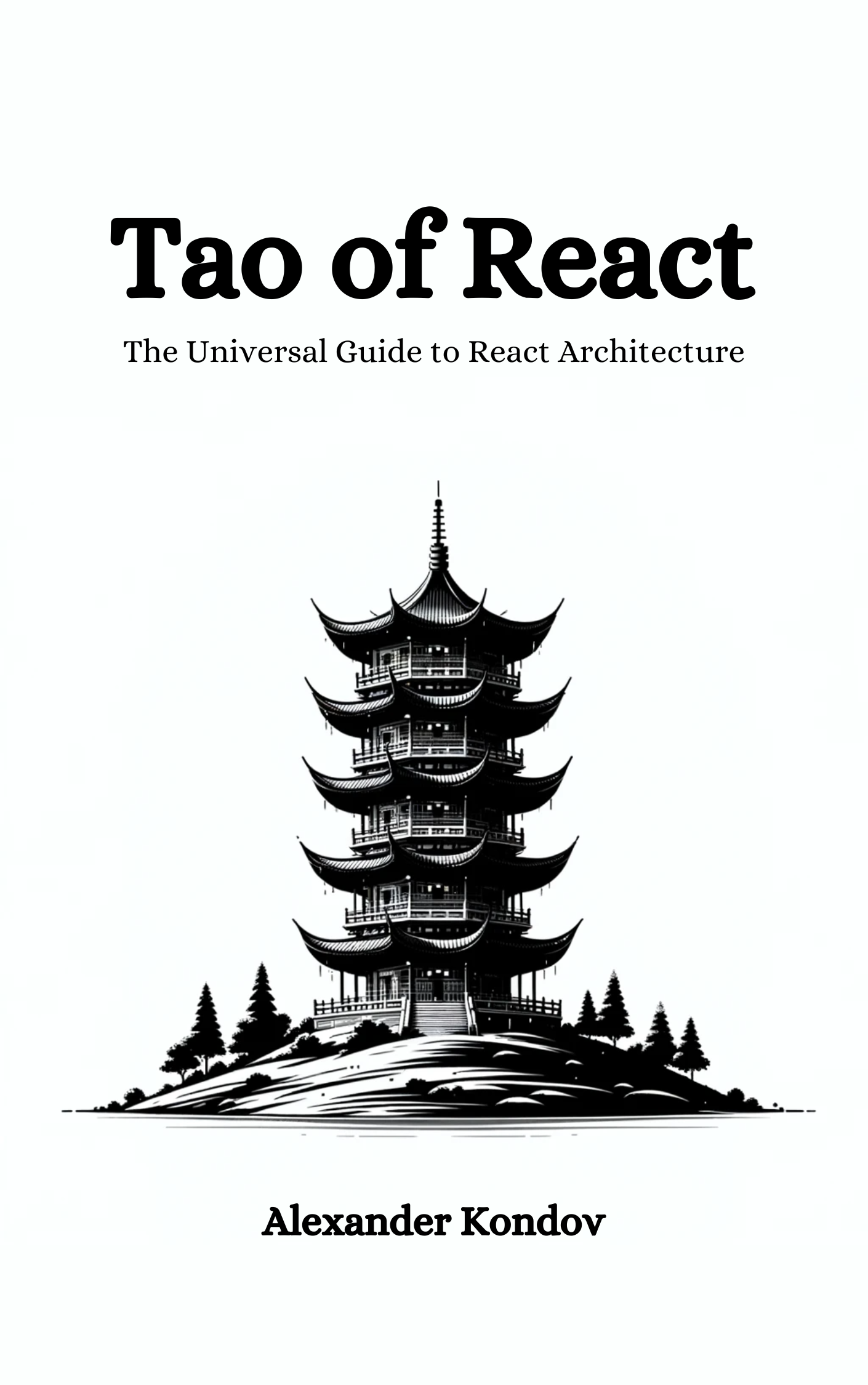The Universal Guide to React Architecture
Tao of React
A reference of rules and guidelines to build better front-end applications. From application structure to component design, testing and performance.
By Alexander Kondov
Evergreen knowledge that will never go out of date.

Your next step after the fundamentals.
You take a React course and learn the fundamentals. You can build simple applications and know how things work. You start building your first larger project and questions pop up. There are many resources that can teach you the little pieces. No one tells you how to put them together to build real applications.
How do I structure my project so it's easy to maintain?
How do I make my components more reusable and where do I put them?
How do I test my components and what should I test?
Most applications need to be extended, modified and supported. To work productively you need more than just knowledge of React. You need to know how to structure a codebase, what practices to follow when building components and how to make trade offs.
Let me help you out. Through trial and error I've formulated a set of principles that I follow when working with React. I've learned them the hard way but you don't have to.
For beginners and intermediate React developers.
Tao of React is for beginners who want to advance further in their knowledge. The best time to read it is when you've grasped the fundamentals and are starting to build real applications.
This book isn't a React 101. It builds on top of the core concepts and helps you form the right principles. What exactly do you need to know? Basic state management, props, hooks and the component lifecycle.
If you've built an application following a tutorial and you're wondering how you can scale it — this is for you.
If you started building a project and you were confused about structuring it — this is for you.
If you're not sure how to organize your components and name them — this is for you.
Tao of React will help you go from beginner to intermediate by helping you understand core principles about software design.
Chapters
Each chapter contains a set of concise and simply put rules to follow as you build the next great application. You don't have to read them in a particular order. Dive in and learn what's most interesting to you.
High level concepts and decisions that make a codebase modular and extensible. You will learn how to structure a project, manage duplication and handle business logic.
Low level details are as important as high level ones. The component rules will teach you how to name, organise and design components.
Development is never final. We'll learn principles about testing that will help us maintain quality and stability as our application grows and changes.
It doesn't matter how good your product is if it's slow. We'll explore core performance principles to keep in mind as we develop the next big thing.
Principles
Each rule is a concise, self-contained principle that teaches you how to build better React applications. They are straight to the point without unnecessary explanations and noise. Reading them in order helps, but you can use the book as a reference and hop from principle to principle.
// 👎 Avoid unnamed components
export default () => <form>...</form>// 👍 Name your components
export default function SignupForm() {
return <form>...</form>
}What do people say?
Tao of React was voted #3 Product of the Day on Product Hunt when it was released. It's used by thousands of engineers to level up their React skills.
"I found the Tao of React when I was just starting my career as a React Native developer. I was a junior developer at the time and it helped with my confidence so much. I found myself referring to the book before googling anything!"
— Aaron Thompson
"It's a great reference. I use it a lot when I need to justify my choices. I actually often say things like "Alexander Kondov said that in Tao of React". I can't wait to read the new one!"
— Alexandre Pinel
"I came across the Tao of React and I went from just 'trying' things out to having a clear understanding of bootstrapping a React project from scratch. Tao of React is in fact my default recommendation for Junior developers."
— Aremu Oluwagbamila
Frontend Engineer, Quidax
"Tao of React is nothing short of amazing! It's the missing guide for react developers to make sense of the complexity or how to avoid it."
— Joshua Chu
Get the book
You buy me lunch and I tell you everything I know about React.
eBook
- All 4 chapters
- 80+ rules
- 170 pages
- Evergreen knowledge
Want to try before you buy? There's a free article version of Tao of React available. I still update it regularly with new insights.
The book is the complete, expanded version - more than twice the size of the article with better examples and deeper explanations.
No email or credit card required.
About the author

Alexander Kondov
I'm a software engineer by day, writer by night and Dungeons & Dragons enthusiast in between.
I've been building React apps since 2016. I lead a team at the Financial Times, building the UIs for their niche media products. Before that I wrote React for early stage startups and had a go at running my own.
My aim is to pass down what I've learned about architecture and software design through my books. Tao of React is the first in a series.